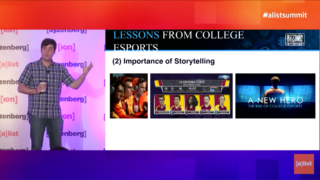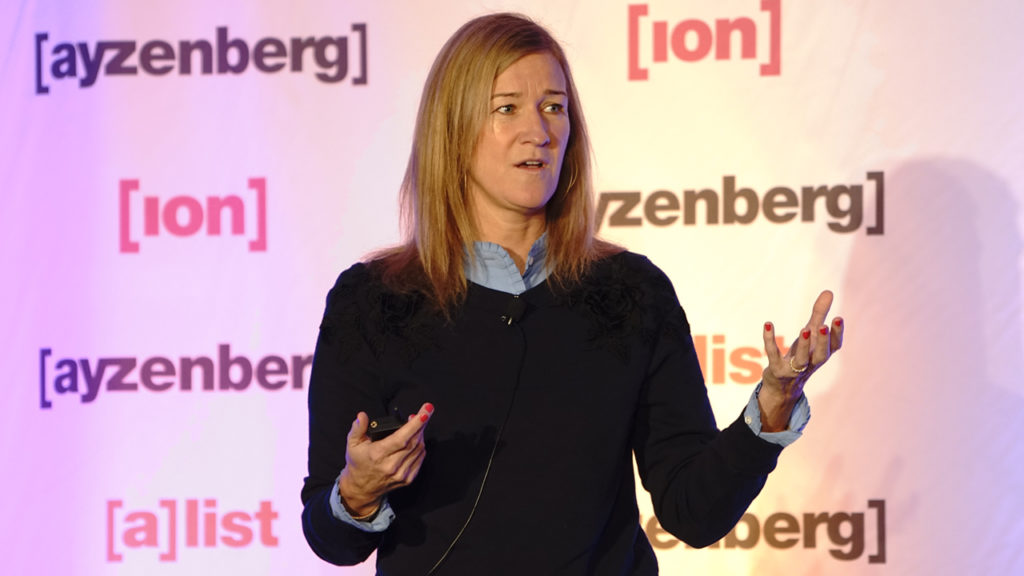A common thread among [a]list summit speakers this year was about the importance of storytelling through content. By tapping into the human interest side of eSports and casual gaming, brands learned lessons that transcended video game genres and demographics.
Heroes of the Dorm, for example, focuses on collegiate tournaments for Blizzard’s popular Heroes of the Storm title.
“One of the challenges that we have with collegiate tournaments, specifically, is that there’s a pretty high turnover of the players,” explained Adam Rosen, eSports business operations manager for Blizzard Entertainment. “One of the things that we had to focus on when we created Heroes of the Dorm was telling stories of that constant—the university. We found that it was pretty much a blessing in disguise. One of the reasons I think sports is so compelling is that we take a lot of interest in following the teams . . . following their stories and putting ourselves in their shoes. When a team is about to break the all-time record for consecutive wins, that’s something that we get behind and we root for. It’s interesting to us.
“We took a similar approach to Dorm where we said, ‘okay if we’re going to build storylines, we’re going to focus on two things.’ One of those things is stats, so we really dug deep within our games and really looked at the teams that are playing to create personas around them. We created strengths and weaknesses by how they perform in game . . . by doing that, we were able to really create identities around these teams that sometimes had players no one had heard of in their lives, but were suddenly interested because they had some sort of hook.

“Another thing we focused on was creating a really robust stream of content—telling stories within a single broadcast of a match [is difficult because] there isn’t a lot time. So we put a lot of emphasis on telling stories from start to the finish. We even made a documentary that was focused on the top four teams, their story [and] their path to that final stage. In doing so, we were able to shine a light on the human interest piece which we found really caused the audiences to connect with the teams in a way that hadn’t been done before.
“Our takeaway here is that by focusing on storytelling,” Rosen concluded, “we can focus on identities—and identities, at the end of the day, are what we connect with as fans.”
For the team behind ELeague—the eSports programming avenue by TBS—capturing the audience’s imagination through the players, too, became a vehicle for engagement.
“Storytelling is paramount to us,” explained Christina Alejandre, vice president of eSports and general manager for ELeague. “Overwatch [Open Grand Finals] was just a week-long tournament and we were working closely with Blizzard to find out who the different players and the different teams were—what stories to create around it. Even in a short turnaround time, we were able to create some of the stories.”
Steven Roberts, executive chairman of ESL, identified Intel as a prime example of a brand that has tied authenticity and credibility to the community.
“They spent an enormous amount of time over the past 12 years moving forward to every season getting better and better at telling the story about how their silicon chips are the type of performance-enhancing tool that gamers should use,” said Roberts. “They do a really good job of including their OEM at every event so that people at the event can test drive [and] understand the latest technology.”
Super League Gaming partnered with movie theaters to bring local gamers together to play and compete—an amateur arena that CEO and chairman Ann Hand likens to little league baseball. Her brand teamed up with League of Legends developer Riot Games, who guided them in how to interact with the community—something Hand appreciates.
“These publishers know their community better than anybody,” she stressed. “You just have to listen to them, and trust them.”

